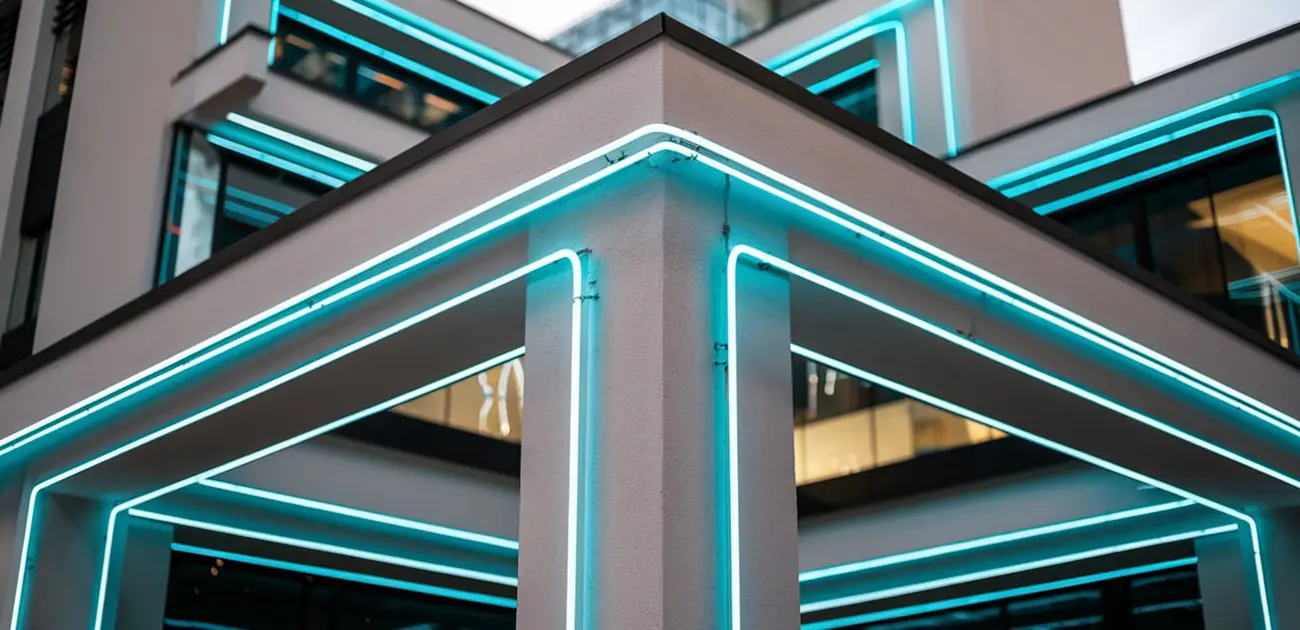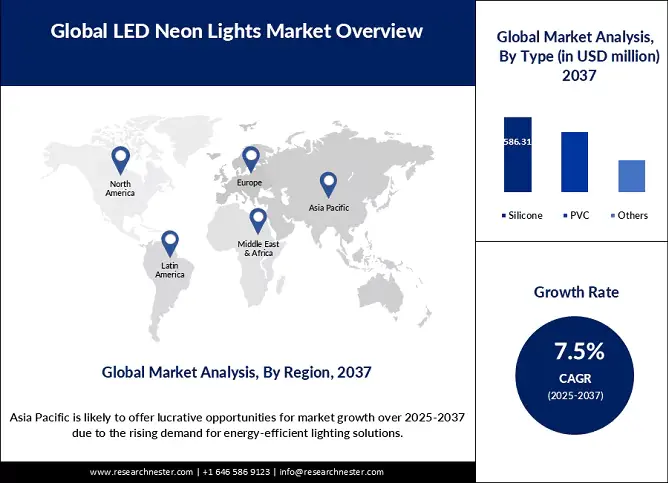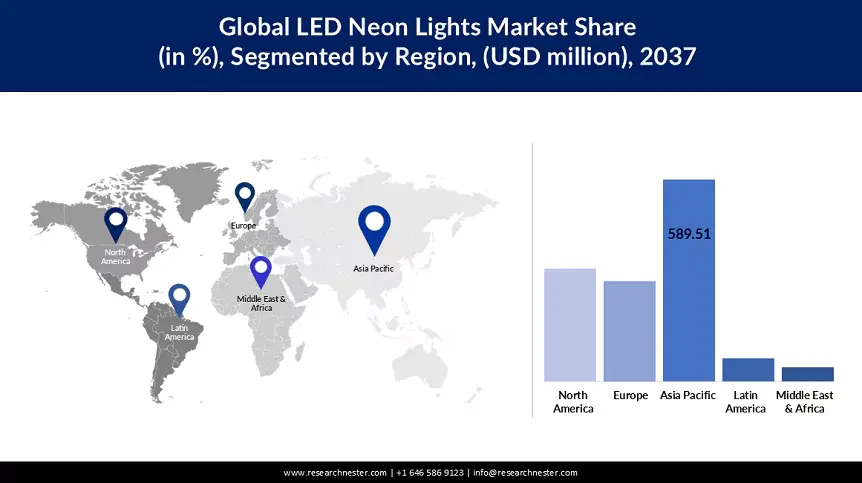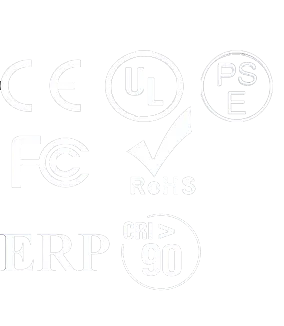
Silicone LED Neon Light Market Trends: Insights from 2024 to 2037
Introduction
The LED neon light market is experiencing significant growth, driven by a shift towards energy-efficient and aesthetically pleasing lighting solutions. As consumers increasingly seek innovative ways to enhance their environments, LED neon lights have emerged as a favored choice for both residential and commercial applications. According to multiple market studies, the global LED neon light market is expected to reach .3 billion by 2037, with a compound annual growth rate (CAGR) exceeding 7.5%. Particularly, silicone LED neon strips are leading this trend with their superior performance and diverse applications。
This article will provide a comprehensive analysis of the development trends, market drivers, application fields, and future outlook of silicone LED neon strips.
Table of Contents
Market Overview

According to a report by Cognitive Market Research, the global LED neon light market is expected to reach $1.542 billion by 2024 and will experience rapid growth in the coming years. Data from Research Nester indicates that the market size will reach $3.3 billion by 2037,with a compound annual growth rate (CAGR) exceeding 7.5% (Cognitive Market Research, 2024; Research Nester). This growth can be attributed to several factors:
1.Consumer Demand for Energy Efficiency: With rising electricity costs and increased awareness of environmental issues, consumers are gravitating towards energy-efficient lighting solutions.
2. Versatility and Aesthetic Appeal: LED neon lights offer unparalleled flexibility in design, making them suitable for a wide range of applications, from signage to decorative lighting.
3. Technological Advancements: Innovations in LED technology have resulted in products that are not only brighter but also more durable and adaptable.
While specific market size figures vary between sources, all indicate substantial growth:
| Years | Market Value (Billion USD) |
|---|---|
| 2024 | 1.54 |
| 2030 | 2.55 |
| 2037 | 3.3 |
The Advantages of Silicone in LED Neon Lights
Silicone LED neon strips are gaining significant traction in the market, projected to capture 44.4% of the market share by 2037. This growth can be attributed to the remarkable properties of silicone, which make it an ideal material for a variety of applications, particularly in outdoor settings.
One of the standout advantages of silicone is its exceptional durability. Unlike traditional materials, silicone can withstand high temperatures and extreme weather conditions, making it highly suitable for outdoor use. It is resistant to UV radiation, which prevents fading and discoloration over time. This characteristic ensures that the vibrant colors of silicone LED neon lights remain intact, even after prolonged exposure to sunlight.
Moreover, silicone’s inherent flexibility allows it to bend, twist, and stretch without losing its structural integrity. This adaptability opens up a world of design possibilities, enabling creative and unique installations that can follow intricate shapes and contours. Whether it’s for architectural highlights or artistic displays, silicone LED neon strips can be tailored to fit virtually any design requirement.
Additionally, the longevity of silicone LED neon lights is a significant advantage. With a lifespan exceeding 50,000 hours, these lights substantially reduce the frequency of maintenance and replacement. This not only lowers operational costs but also minimizes the environmental impact associated with disposing of lighting materials.
In summary, the advantages of silicone—its durability, flexibility, and extended lifespan—position silicone LED neon strips as a superior choice for both residential and commercial lighting solutions, particularly in outdoor applications. As the market continues to grow, these features will likely drive increased adoption among consumers and businesses alike.
Key Drivers of Market Growth
1.Sustainability and Eco-Friendliness: As sustainability becomes a priority for consumers and businesses alike, the demand for eco-friendly lighting options has surged. LED neon lights consume significantly less energy compared to traditional lighting, contributing to lower carbon footprints.
2. Expansion in End-User Industries: The retail, hospitality, and events sectors are major consumers of LED neon lights. The trend toward experiential retail and creative event displays has driven demand for innovative lighting solutions that can enhance customer experiences.
3. Customization and Personalization: The ability to customize LED neon lights to suit individual tastes and preferences is becoming increasingly important. Retailers and contractors are now offering tailored solutions that cater to unique customer requirements.
4. Technological Advancements: Ongoing improvements in LED technology are enhancing the performance and capabilities of LED neon lights.
5. Goverment regulation and incentives Support:Governments worldwide are increasingly implementing regulations and incentives to promote energy-efficient lighting solutions. This support fosters a favorable environment for the adoption of LED neon lights, encouraging both consumers and businesses to invest in these technologies.
Based on market analysis, the commercial sector is expected to account for 57.9% of the LED neon light market share. Key application areas include advertising, signage, interior decoration, and outdoor lighting. As businesses increasingly prioritize energy efficiency, longevity, and aesthetic value, the demand for LED neon lights among commercial clients continues to rise.
| Industry | Growth Driver |
|---|---|
| Retail | Enhanced visual merchandising |
| Hospitality | Creating inviting atmospheres |
| Events | Unique lighting displays for occasions |
| Architecture | Innovative design solutions |
| Advertising | Draw Client attention and Increase sales |
Market Trend
The LED neon light market is characterized by continuous technological advancements. Key innovations include:
1.Smart Technology Integration: The rise of smart homes has prompted the integration of LED neon lights with smart home systems. Consumers now seek lights that can be controlled via mobile apps or voice commands.
2. Improved Materials: Advancements in materials, such as silicone,PU Material for LED neon strips, have led to products that are more durable, weather-resistant, and flexible, making them ideal for both indoor and outdoor applications.
3. Enhanced Light Quality: Recent developments in LED technology have improved color rendering and brightness, allowing for a wider range of applications and better overall customer satisfaction.
4.Customization: There’s a growing trend towards customizable LED neon lights, allowing businesses and consumers to create unique designs.
5. Sustainable Lighting Solutions: As environmental concerns grow, the demand for eco-friendly lighting options like LED neon lights is increasing.
Regional Insights

The LED neon light market is not only characterized by its overall growth but also by distinct regional dynamics. Understanding these regional variations is crucial for businesses looking to capitalize on market opportunities.
North America
North America is expected to hold a significant market share in the LED neon light sector, largely due to early adoption of LED technologies and continuous innovations in lighting solutions. The region’s market was valued at approximately $460 million in 2024, with projections indicating it could reach around $1 billion by 2030. Factors contributing to this growth include a robust regulatory framework supporting energy efficiency, high disposable incomes, and a strong preference for smart lighting solutions among consumers. Furthermore, the rising demand for aesthetically pleasing signage and decorative lighting in commercial and residential spaces bolsters the market.
Asia Pacific
The Asia Pacific region is projected to be the fastest-growing market for LED neon lights, with an expected CAGR of over 9% from 2024 to 2037. The market value in this region is anticipated to surpass $1 billion by 2030, fueled by rapid urbanization, increasing disposable incomes, and a burgeoning middle class seeking modern lighting solutions. Countries like China and India are at the forefront of this growth, driven by significant investments in infrastructure, hospitality, and entertainment sectors. The growing trend of experiential retail and decorative lighting further amplifies demand in urban areas.
Europe
Europe is experiencing steady growth in the LED neon light market, particularly in countries with stringent energy efficiency regulations, such as Germany and the Netherlands. The European market was valued at approximately $350 million in 2024 and is expected to reach around $750 million by 2030. The region’s commitment to sustainability and the reduction of carbon emissions significantly influences the adoption of energy-efficient lighting solutions. Furthermore, consumers in Europe are increasingly drawn to customizable LED neon lights for both residential and commercial applications, driving demand across various sectors.
Latin America
Latin America presents a growing opportunity for LED neon lights, although the market remains relatively nascent compared to other regions. Valued at approximately $100 million in 2024, the market is projected to grow at a CAGR of around 7% through 2037. This growth is primarily driven by increasing urbanization and a rising focus on energy-efficient solutions amidst economic recovery in countries like Brazil and Mexico. As infrastructure projects expand, the demand for visually appealing and flexible lighting solutions is likely to rise, further enhancing market potential.
Middle East
The Middle East is also witnessing a gradual increase in the adoption of LED neon lights, particularly in commercial and hospitality sectors. The market, valued at around $120 million in 2024, is expected to grow as governments invest in smart city initiatives and infrastructure development. With the region’s focus on diversification away from oil-dependent economies, innovative lighting solutions that enhance aesthetic appeal and energy efficiency are becoming more popular. Major events, exhibitions, and a growing entertainment industry are expected to further drive demand for LED neon lights in the coming years.
Challenges Facing the LED Neon Light Market
Despite the promising growth trajectory of the LED neon light market, several challenges could hinder its expansion and profitability. Understanding these challenges is crucial for industry players seeking to navigate the competitive landscape effectively.
Initial Cost
One of the primary barriers to widespread adoption of LED neon lights is the initial investment required. Although LED neon lights offer significant cost savings in terms of energy efficiency and longevity, the upfront costs can be considerably higher than those of traditional neon or incandescent lighting options. This price sensitivity can deter potential buyers, especially small businesses or individual consumers who may be hesitant to make such an investment without immediate returns. Educating customers about the long-term savings and benefits can be essential for overcoming this challenge.
Competition
As the demand for LED neon lights increases, so does the competition within the market. A growing number of manufacturers and suppliers are entering the space, leading to market saturation. This influx of new entrants can result in price pressures, as companies may reduce their prices to attract customers. While this can benefit consumers in the short term, it poses a challenge for established businesses that rely on maintaining profit margins. To stay competitive, companies must differentiate their products through quality, unique features, or exceptional customer service.
Quality Variability
As the LED neon light market grows, a significant challenge is the variability in product quality. With many new manufacturers entering the space, the disparity in quality has increased, leading to issues such as uneven illumination and premature failure in low-quality products. These problems not only detract from aesthetic appeal but also result in higher replacement costs and diminished consumer satisfaction. If customers encounter subpar lighting solutions, it can erode trust in the entire category, hindering future investments. To combat this, industry stakeholders must prioritize quality control and standardization, ensuring that consumers receive reliable products that meet their expectations, ultimately fostering customer satisfaction and brand loyalty.
Technical Limitations
Despite the advancements in LED technology, certain applications may still prefer traditional neon lighting for specific aesthetic qualities. Traditional neon lights are often valued for their vibrant glow and nostalgic appeal, particularly in artistic or vintage-themed settings. Some consumers and designers may find that LED neon lights do not fully replicate the warmth and ambiance of traditional neon. Addressing these technical limitations and improving the aesthetic qualities of LED neon lights will be essential for capturing a broader market share.
Future Outlook
The LED neon light market is expected to continue its growth trajectory beyond 2032, with some projections extending to 2037. Factors such as ongoing technological innovations, increasing awareness of energy efficiency, and expanding applications in various industries are likely to sustain this growth.
In conclusion, the LED neon light market is set for robust growth from 2024 to 2032, driven by energy efficiency, versatility, and technological advancements. With a projected CAGR of 8.00% and an expected market size exceeding $2 billion by 2032, this sector presents significant opportunities for manufacturers, retailers, and investors in the lighting industry.
Share this article
Written by : Sophia Ng
Hey there! This is Sophia Ng, Worked for Sunroleds with 15 years in the industry, specializing in sales and marketing.
I'm committed to excellence and always aim to exceed expectations. Outside of work, I enjoy traveling and exploring traditional Chinese culture.
Let's connect and make some magic happen!

